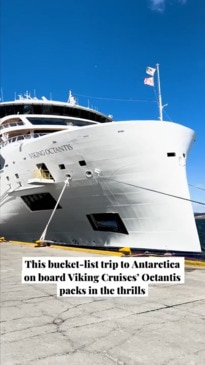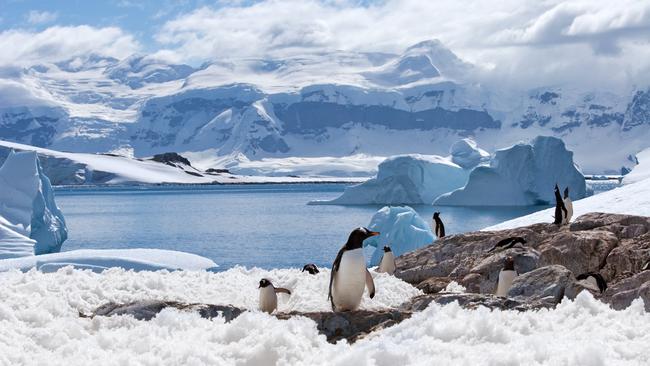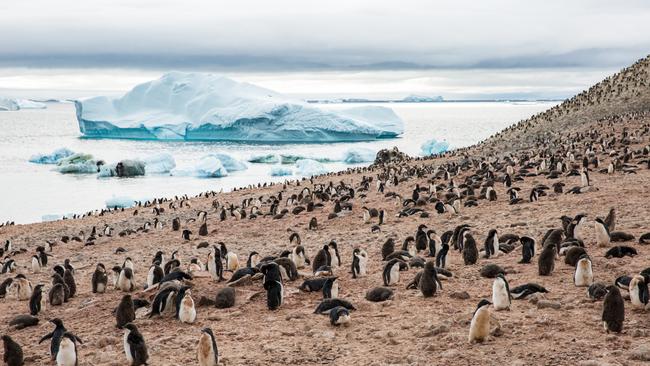Cruise lines ramp up Antarctic biosecurity measures as tourism increases
With increasing visitors and bird flu posing a risk to the White Continent’s most precious inhabitants, cruise lines are vigilant about biosecurity.

Lifestyle
Don't miss out on the headlines from Lifestyle. Followed categories will be added to My News.
An expedition to Antarctica is high on any intrepid traveller’s wish list. Many seasoned travellers I know have named a cruise there as a life highlight – imagine seeing ever-changing icebergs and incredible wildlife.
But when contemplating such an expedition, consider whether the White Continent is being loved to death. Last year 43,224 cruisers voyaged there and with the October to March season about to begin, it’s likely the number will be similar. Fortunately, there are protections in place.

Members of the International Association of Antarctica Tour Operators, including Australia’s Aurora Expeditions, are committed to responsible and respectful travel to Antarctica. The cruise line advises that it’s important for expeditioners to familiarise themselves with key information and protocols before any journey.
A key consideration is highly pathogenic avian influenza (HPAI), outbreaks of which have killed hundreds of thousands of seabirds around the world since 2021. Marine mammals, including seals and sea lions, have also been affected.
On board Aurora’s expedition ships there’s information about the measures Aurora has implemented, and how expeditioners can do their bit to protect the pristine environment while on shore excursions. For example, sitting, kneeling or laying down is not allowed, nor is placing equipment on the ground or snow.

And, like Australia’s strict biosecurity controls that anyone that has flown internationally will know, it’s important not to “pack a pest” by ensuring anything that may come into contact with the Antarctic environment – including clothing and equipment – is thoroughly cleaned and disinfected.
And how does the avian flu affect expeditioners’ experience? According to Aurora Expeditions, while all landing sites are open and will remain open during the 2024-25 season, if team leaders see the effects of HPAI at a site, they will not conduct landings. Aurora is also capping guest capacity to 130.
“We recognise our responsibility to protect and preserve the remote places we travel to, and we are proud to be one of the few companies visiting Antarctica and the Arctic with under 150 passengers,” CEO Michael Heath says.

A highlight itinerary this season for Aurora Expeditions will be the 12-day Wild Antarctica featuring the Weddell Sea on the Sylvia Earle departing on March 24 from Ushuaia in Argentina.
On this voyage, conditions permitting, the western side of the Antarctic Peninsula and the South Shetland Islands can be explored and because the ship is so far south, expeditioners could have 18-24 hours of daylight.
Another IAATO member, Hurtigruten Expeditions (HX) is also stringently adhering to protocols such as scouting all landing sites for signs of HPAI before guests disembark and maintaining a five-metre distance from wildlife. Their 12-day Highlights of Antarctica expedition from Buenos Aires includes five days exploring Antarctica with the chance to spot seals, penguin colonies and whales. Guests can contribute to ongoing scientific research through a citizen-science program.
More Coverage
Originally published as Cruise lines ramp up Antarctic biosecurity measures as tourism increases





